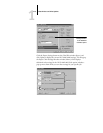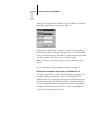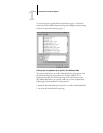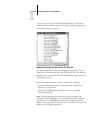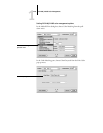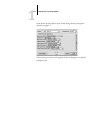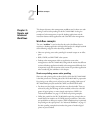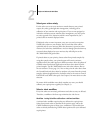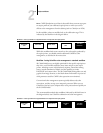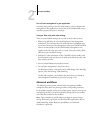
2
2-1 Workflow concepts
This chapter discusses color management workflows used in short-run color
printing as well as color proofing on the iR C2100/2100S. It also gives
examples of color management in specific desktop applications and the
interaction between those applications and ColorWise color management.
Workflow concepts
The term “workflow” is used to describe the path a job follows from its
creation in a desktop application to final printed output. It is helpful to think
of the following categories when describing workflows:
• Short-run printing versus color proofing for eventual output on an offset
press
• RGB, CMYK, and PANTONE color systems
• Desktop color management within an application versus color
management on the iR C2100/2100S, along with the notion that different
versions of desktop applications handle color management differently. So it
is important to pay close attention to the version of a particular application
when considering the workflows in this chapter.
Short-run printing versus color proofing
Short-run color printing refers to those jobs for which the iR C2100/2100S
is the final print device. Printing jobs to the iR C2100/2100S in preparation
for printing on an offset press is referred to as color proofing. Both types of
iR C2100/2100S print jobs use RGB, CMYK, and PANTONE colors.
• For short-run jobs, bright, saturated colors are often desirable. These are
achieved by using the full range of colors available, referred to as the full
gamut of copier/printer, or more simply copier/printer CMYK. See
“Advanced Workflows” on page 2-7 for short-run printing examples.
• Offset jobs proofed on the iR C2100/2100S require the printed colors to
match those from another set of CMYK printing conditions. Colors that
are specified for an offset press require CMYK simulation that is optimized
for proofing on the copier/printer. See “Advanced Workflows” on page 2-7
for color proofing examples that simulate the gamut of another digital
printer or press standard.
Chapter 2:
Simple and
Advanced
Workflows



